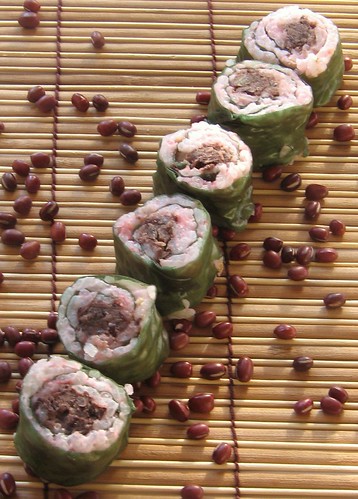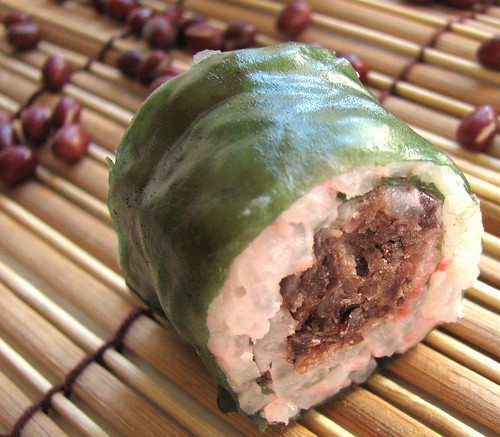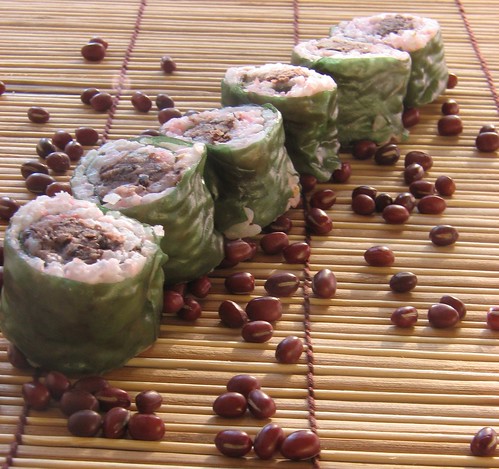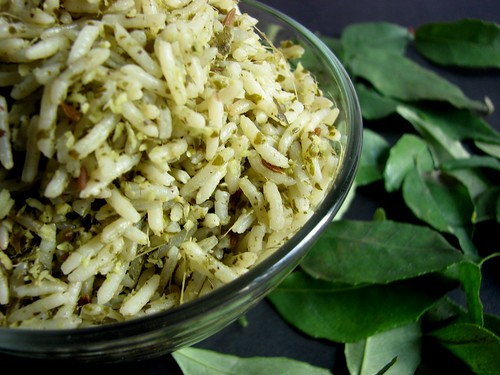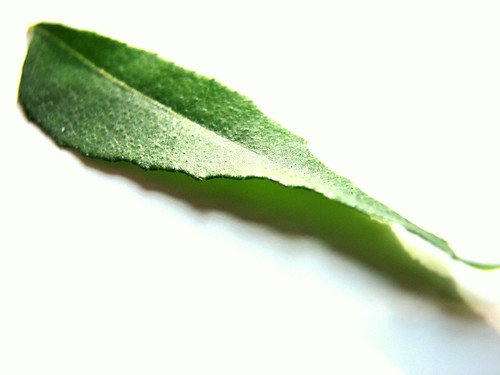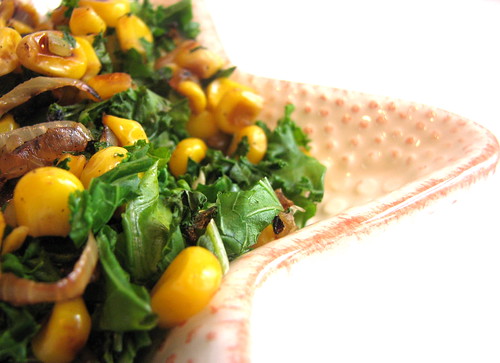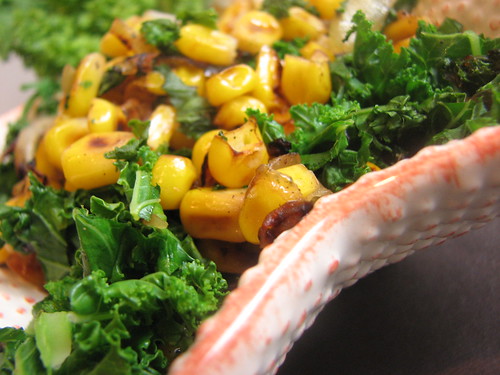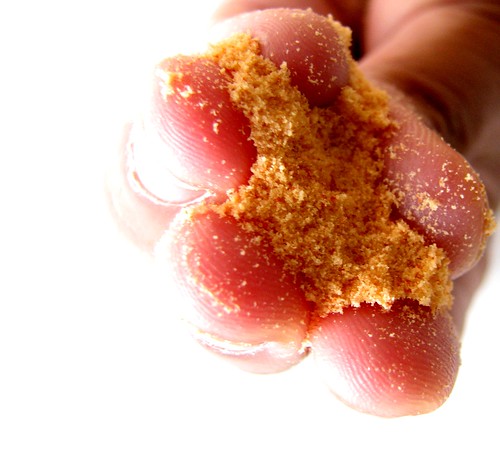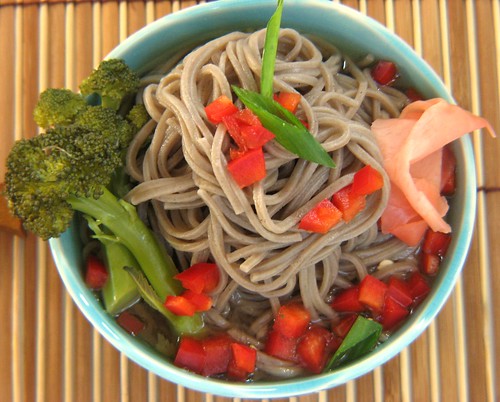
eeeks! I misspelled ‘obsession’  But that’s the charm of homemade canned food.
But that’s the charm of homemade canned food.
My husband S, loves all things canned. He is particularly partial to Chef Boyardee; he cant resist those 10 for $10 deals. And S eats the stuff straight out of the can. In an attempt to cure the canned food obsession, I make fake canned food. I put my own labels on the cans and fill them with homemade food. Battle Boyardee! The very first time I did this, S was on the floor laughing. But he enjoyed the food. Its so much healthier and tastier than canned pasta swimming in what used to be tomato sauce. I made penne with a seven vegetable sauce today – full of fresh veggies, basil and pine nuts for creaminess. The tomatoes, carrots and bell pepper add both color and sweetness. The pine nuts – toasted and pureed – elevate the sauce to a nutty silkiness.
I always use newly opened cans to serve the pasta in. I transfer the contents to another container for use later. (If you are using tomato cans, just use the tomatoes for the sauce recipe)
Ingredients
Pasta – 1 box, I used Penne
Onion – 1 large
Garlic – 6 cloves
Carrots – 2
Celery – 2 stalks
Red Bell Pepper – 2
Tomato – 3
Broccoli – 1 floret
Pine Nuts – 1/4 cup, substitute with cashews or almonds
Olive Oil – 4 tbsp
Water – 3 cups
Marsala Wine – 2 splashes, optional
Basil – 1/2 cup
Parsley – 2 tbsp
Salt – 1 tbsp
Pepper
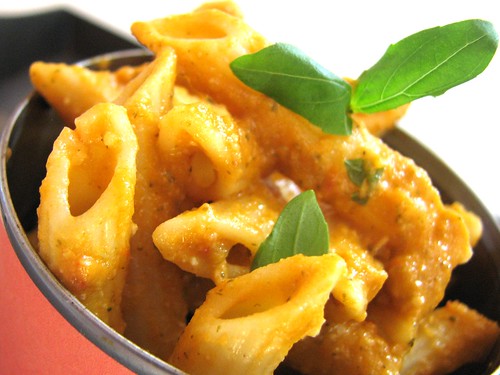
Finely chop the onions and chop all other vegetables into chunks. Toast the pine nuts in a skillet on low heat untill they turn light brown.
Boil pasta in plenty of salted water, till al dente. If you are not using the pasta immediately, wash it in cold water and set aside.
In a large wok, heat the oil. Add the onions and fry on medium high heat till they turn golden brown – about 5 minutes. Make sure you take the time to caramelize the onions, they add a nice sweetness to the sauce.
When the onions are well browned, add the garlic and saute 1 minute. Then add all chopped vegetables. Saute on medium high for 7 minutes. Then add the salt, and marsala wine and cook till the wine evaporates, about 2 minutes.
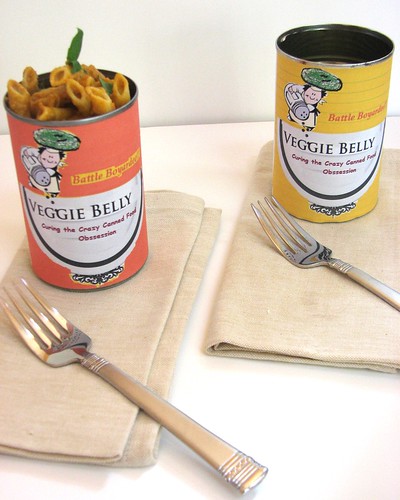
Pour in the water and let it boil. Then reduce heat and let the vegetables simmer for about 5 minutes.
Cool the vegetables slightly and place them in a blender. Blend till they are pureed. Return the vegetable puree to the wok. Simmer on low heat. At this point, the sauce will boil and splatter, so cover with a lid of aluminum foil. Let the sauce simmer on low heat for about 12 minutes, stir once or twice. (Now is a good time to start boiling the pasta).
While the sauce is simmering, blend the pine nuts into a smooth puree with a little water. Add the pine nut puree to the vegetable sauce in the last 2 minutes of cooking. You want a thick sauce, like the consistency of marinara. If your sauce is too runny, simmer it longer.
Turn off heat and stir in chopped basil, parsley and cracked pepper.
To serve, spoon the vegetable sauce over the pasta and garnish with basil.
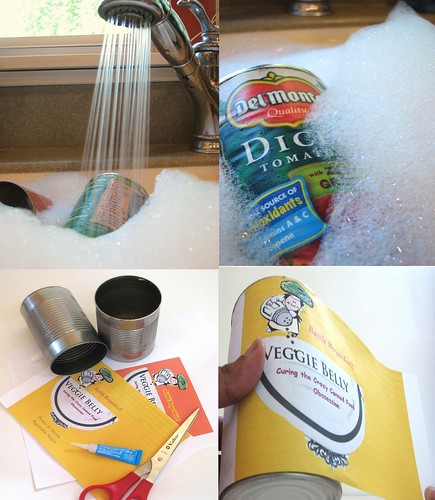
Its very easy to make the cans to serve in. Always use newly opened cans, old ones may rust. Soak tomato or other cans in very hot soapy water for about 1 hour. Peel the labels and let the cans air dry. Print out your own labels and cut them to the can size. Using 3 dots of super glue on one end of the label, stick the label to the can and wrap it around the can firmly. Using 3 more dots of super glue, stick the other end to the can. Warning: Cans may have jagged rims, so be careful.
Did I win Battle Boyardee?




